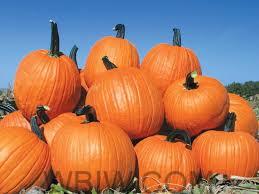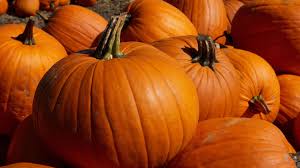
WEST LAFAYETTE — While genetics play a key role in a pumpkin’s potential size, the festive fall vegetable’s growth relies heavily on timely summer rainfall. Looking back at June and July’s precipitation totals, the record-setting hot and dry months pose possible cause for concern for many who grow and buy pumpkins.

Dr. Stephen Meyers, an assistant professor of weed science in the Department of Horticulture and Landscape Architecture in Purdue University’s College of Agriculture, said on his family’s small farm that planting a quarter of an acre of pumpkins in June was difficult, with records set as one of the hottest Junes in Indiana’s recorded history.

“For many farms, the pumpkin season actually starts this time of year as they are planted into a cover crop that is going into the ground right now. The cover crop will then be terminated in late spring or early summer, which is when the pumpkins are then planted to time with a fall harvest,” Meyers said. “For our farm, we planted and didn’t receive much, if any, rainfall for June, which doesn’t encourage much growth for the pumpkins starting out.”
Indiana is one of the nation’s largest pumpkin producers, cultivating around 6,000 acres each year. Large-scale operations often have irrigation systems in case of limited rainfall; however, there can also be a slight benefit to a dry summer.
“A dry summer obviously isn’t good for seed germination, but the dryness means there is less disease pressure,” Meyers said. “Pumpkins are susceptible to a number of plant pathogens, but when conditions are drier, that means fewer fungicides have to be sprayed.”
Although farms that don’t utilize an irrigation system can lose yields to summer drought, farms in those situations typically replant the areas where pumpkin seeds failed to germinate or young plants died early in the growing season.
“On our farm, we let nature take its course for the most part, but we did go back this year and replant in some spots,” he said. “Different pumpkin varieties have different days to maturity. So, for example, your initial planting might take 115 days to reach maturity, but other varieties can take 90 to 95 days. So, when you go back and replant, you select a similar variety that is a bit quicker.”

The traditional jack-o’-lantern is the most popular variety grown — big enough to carve but light enough to be carried out of the pumpkin patch. The weeks leading up to October also bring out people looking for more decorative varieties.
“We see a lot of people looking for the different colored pumpkins, many of which grow with sort of a flat surface so you can stack them,” Meyers said. “They seem to be a popular porch decoration that people seek.”
The majority of Indiana’s commercial pumpkin crop is sold into the “fresh market,” meaning a consumer buys the whole pumpkin the way it comes off the vine rather than processed into consumables like canned pumpkin or pumpkin seeds.
Pumpkin yields will be very site-specific this year. Although pumpkin harvest for some was delayed and yields will be lower, Meyers said to expect plenty of pumpkins available in Indiana, whether consumers are looking to carve them or bake a pie.
Source: Stephen Meyers, slmeyers@purdue.edu
Information: Jillian Ellison, ellison1@purdue.edu



